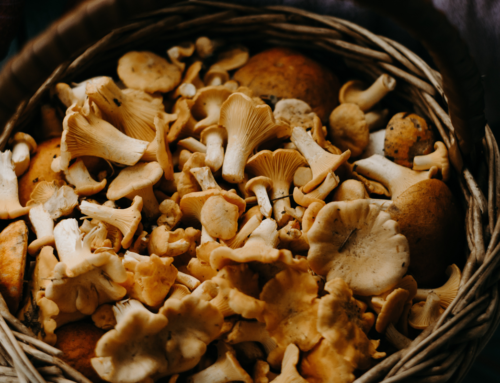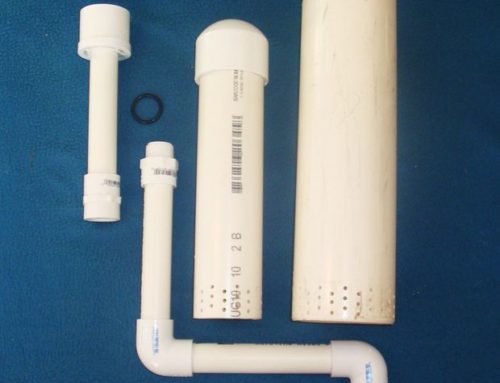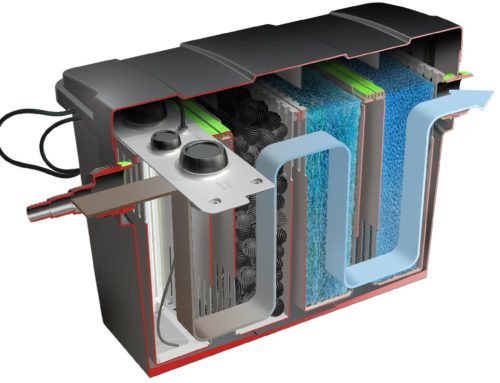A mushroom substrates are inoculated with mycelium through the use of mushroom spawn. Spawn is just a smaller amount of a nutritious material upon which the mycelium can begin to grow before it’s ready to colonize a substrate.
A mushroom substrates are simply any substance on which mycelium will grow.
Cereal straws such as wheat, rye, and oat all make a good base for mushroom growth. They’re easy to get and fairly cheap. I buy mine in large bales from a local feed store.
A big advantage of straw is that it can be used to grow many different types of mushrooms. Most mushrooms have no problem breaking down the plant fibers of straw, making it a versatile substrate.
A disadvantage of straw is that it should be prepared first, especially if you’re growing mushrooms indoors. Straw is laden with other microbes, and if you don’t get rid of those tiny competitors the mushroom mycelium may not have a chance to grow.
- For those that use wheat straw as the main substrate, the pasteurization process can be used to prepare the substrate for the mushroom. Pasteurization does not sterilize the substrate but will remove the unwanted contaminants and retain the beneficial bacteria. This process is the easier and faster of the two but will consume more water.
- Wheat straw is one of the better substrates to use for Oyster mushroom cultivation. Use clean, uncontaminated chopped straw only. Do not chip too fine, 4-10cm pieces is perfect.
Pasteurisation – STRAW –
 The tools needed for this process is a 210 liter steel drum (a large oil drum), a meshed basket to hold the substrate, a high pressure gas regulator and burner as well as access to water. Preheat the water in the steel drum to 65°C. Next lower your meshed basket with straw into the warm water. Place a weight on top of the straw to avoid it from floating up. Keep the temperature steady and leave the straw to soak in the water for 1 and a half hours (1:30 min). Now remove the meshed basket from the water or drain the water from the drum. The meshed basket with straw will be heavy; you may need an extra hand to pick it out of the drum. The straw needs to rest for some hours until it cools enough to receive the mushroom culture.
The tools needed for this process is a 210 liter steel drum (a large oil drum), a meshed basket to hold the substrate, a high pressure gas regulator and burner as well as access to water. Preheat the water in the steel drum to 65°C. Next lower your meshed basket with straw into the warm water. Place a weight on top of the straw to avoid it from floating up. Keep the temperature steady and leave the straw to soak in the water for 1 and a half hours (1:30 min). Now remove the meshed basket from the water or drain the water from the drum. The meshed basket with straw will be heavy; you may need an extra hand to pick it out of the drum. The straw needs to rest for some hours until it cools enough to receive the mushroom culture.
After Pasteurisation –
 Once your substrate has reached a temperature below 25°C you are ready for inoculations. Carefully break up the seed spawn into individual kernels. Cut open the top corner of the spawn bag with sterile scissors. The easiest way to do the inoculation is by layering your straw and spawn seeds like a sandwich. Add straw in to the bottom of the bag then a bit of seed spawn then again some straw. Proceed until the bag is filled and can be tied closed. Puncture some holes into the sides of your bag to allow airation. Place the inoculated bags in a dark room for 10 – 14 days for the spawn run. You may lay the bags on their sides to avoid the water content to gravitate to the bottom of the bags. Avoid water collecting in the base of the bags. Maintain the temperature throughout at 18ºC.
Once your substrate has reached a temperature below 25°C you are ready for inoculations. Carefully break up the seed spawn into individual kernels. Cut open the top corner of the spawn bag with sterile scissors. The easiest way to do the inoculation is by layering your straw and spawn seeds like a sandwich. Add straw in to the bottom of the bag then a bit of seed spawn then again some straw. Proceed until the bag is filled and can be tied closed. Puncture some holes into the sides of your bag to allow airation. Place the inoculated bags in a dark room for 10 – 14 days for the spawn run. You may lay the bags on their sides to avoid the water content to gravitate to the bottom of the bags. Avoid water collecting in the base of the bags. Maintain the temperature throughout at 18ºC.
Oyster Mushrooms
 Oyster mushrooms need fresh air, light and some cold days (12ºC – 16ºC) to initiate pinning. This is achieved by placing the mushroom bags (max. diameter 30cm) in a well-ventilated grow space and piercing the plastic bags (make a X cut). The bigger your substrate bags, the more holes you can make in the plastic. Give your bags 12 hours of light per day to produce well-formed mushrooms. You will first notice minute little knots starting to develop where the bags were punctured. The knots will grow into baby mushrooms and within five days have matured to adults. Oyster mushrooms will produce well in temperatures ranging between 16ºC – 20ºC. Harvest the mushrooms before the cap have curled up. Store your oyster mushrooms refrigerated at 4ºC.
Oyster mushrooms need fresh air, light and some cold days (12ºC – 16ºC) to initiate pinning. This is achieved by placing the mushroom bags (max. diameter 30cm) in a well-ventilated grow space and piercing the plastic bags (make a X cut). The bigger your substrate bags, the more holes you can make in the plastic. Give your bags 12 hours of light per day to produce well-formed mushrooms. You will first notice minute little knots starting to develop where the bags were punctured. The knots will grow into baby mushrooms and within five days have matured to adults. Oyster mushrooms will produce well in temperatures ranging between 16ºC – 20ºC. Harvest the mushrooms before the cap have curled up. Store your oyster mushrooms refrigerated at 4ºC.
The mushroom grow space basics
Plenty of mushrooms can be grown in a relatively small space. The essentials for mushrooms to survive are:
- Fresh Air
- 12 Hours light cycle
- Relative humidity from 80% upwards
- The correct temperature
 To accomplish this you will at least need a 6 X 3 meter grow house. Paint the inside of your grow house with an anti-fungal paint. It is also advisable to have a drain and concrete slab in your grow house to be able to maintain a relative sterile environment.
To accomplish this you will at least need a 6 X 3 meter grow house. Paint the inside of your grow house with an anti-fungal paint. It is also advisable to have a drain and concrete slab in your grow house to be able to maintain a relative sterile environment.
When looking at the fresh air requirements for your grow space, most mushrooms need the air to be exchanged 4 times an hour. Work out the cubic meter space and purchase a fan than can push fresh air into your grow room at least four times per hour. Push air in than rather than extracting air out, this will maintain a positive pressure in the grow space. Have a covered exhaust exit on the opposite side of the grow room.
- For humidification I prefer using the ultrasonic humidifiers available from Green Thumb Hydro.
- For lighting use LED strip lights, these will cost you less in the long term. Have them on a 12 hour timer switch.
- For winter temperature control, have one or two wall mounted eco-heaters on a thermostatic switch to control the exact temperature.
To be successful at growing mushrooms, it is advisable to have a separate room for incubation, this room is dark, but also needs some fresh air as well as the correct incubation temperature.
Special offer:
Join our partner special offer for Internet Marketing Course and expand your business online.




